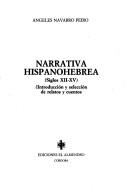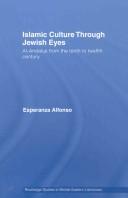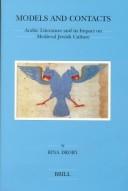| Listing 1 - 10 of 22 | << page >> |
Sort by
|
Book
ISBN: 9788837219901 8837219903 Year: 2004 Publisher: Brescia: Morcelliana,
Abstract | Keywords | Export | Availability | Bookmark
 Loading...
Loading...Choose an application
- Reference Manager
- EndNote
- RefWorks (Direct export to RefWorks)
Book
Year: 2021 Publisher: Cambridge, UK : Open Book Publishers,
Abstract | Keywords | Export | Availability | Bookmark
 Loading...
Loading...Choose an application
- Reference Manager
- EndNote
- RefWorks (Direct export to RefWorks)
"This volume is dedicated to the cultural and religious diversity in Jewish communities from Late Antiquity to the Early Middle Age and the growing influence of the rabbis within these communities during the same period. Drawing on available textual and material evidence, the fourteen essays presented here, written by leading experts in their fields, span a significant chronological and geographical range and cover material that has not yet received sufficient attention in scholarship. The volume is divided into four parts. The first focuses on the vantage point of the synagogue; the second and third on non-rabbinic Judaism in, respectively, the Near East and Europe; the final part turns from diversity within Judaism to the process of "rabbinization" as represented in some unusual rabbinic texts. Diversity and Rabbinization is a welcome contribution to the historical study of Judaism in all its complexity. It presents fresh perspectives on critical questions and allows us to rethink the tension between multiplicity and unity in Judaism during the first millennium CE. L'École Pratique des Hautes Études has kindly contributed to the publication of this volume.".
Book
Year: 2021 Publisher: Cambridge, UK : Open Book Publishers,
Abstract | Keywords | Export | Availability | Bookmark
 Loading...
Loading...Choose an application
- Reference Manager
- EndNote
- RefWorks (Direct export to RefWorks)
"This volume is dedicated to the cultural and religious diversity in Jewish communities from Late Antiquity to the Early Middle Age and the growing influence of the rabbis within these communities during the same period. Drawing on available textual and material evidence, the fourteen essays presented here, written by leading experts in their fields, span a significant chronological and geographical range and cover material that has not yet received sufficient attention in scholarship. The volume is divided into four parts. The first focuses on the vantage point of the synagogue; the second and third on non-rabbinic Judaism in, respectively, the Near East and Europe; the final part turns from diversity within Judaism to the process of "rabbinization" as represented in some unusual rabbinic texts. Diversity and Rabbinization is a welcome contribution to the historical study of Judaism in all its complexity. It presents fresh perspectives on critical questions and allows us to rethink the tension between multiplicity and unity in Judaism during the first millennium CE. L'École Pratique des Hautes Études has kindly contributed to the publication of this volume.".
Book
Year: 2021 Publisher: Cambridge, UK : Open Book Publishers,
Abstract | Keywords | Export | Availability | Bookmark
 Loading...
Loading...Choose an application
- Reference Manager
- EndNote
- RefWorks (Direct export to RefWorks)
"This volume is dedicated to the cultural and religious diversity in Jewish communities from Late Antiquity to the Early Middle Age and the growing influence of the rabbis within these communities during the same period. Drawing on available textual and material evidence, the fourteen essays presented here, written by leading experts in their fields, span a significant chronological and geographical range and cover material that has not yet received sufficient attention in scholarship. The volume is divided into four parts. The first focuses on the vantage point of the synagogue; the second and third on non-rabbinic Judaism in, respectively, the Near East and Europe; the final part turns from diversity within Judaism to the process of "rabbinization" as represented in some unusual rabbinic texts. Diversity and Rabbinization is a welcome contribution to the historical study of Judaism in all its complexity. It presents fresh perspectives on critical questions and allows us to rethink the tension between multiplicity and unity in Judaism during the first millennium CE. L'École Pratique des Hautes Études has kindly contributed to the publication of this volume.".
Book
Year: 2022 Publisher: Cambridge : Open Book Publishers,
Abstract | Keywords | Export | Availability | Bookmark
 Loading...
Loading...Choose an application
- Reference Manager
- EndNote
- RefWorks (Direct export to RefWorks)
This groundbreaking new work is the first full critical edition and English translation of the Hebrew book Sefer ha-Pardes [The Book of the Orchard], written at the end of the thirteenth century by the Provençal Jewish author Jedaiah ha-Penini. It is purportedly an example of musar: a compilation of wise epigrams and meshalim [parables] that teach moral lessons on different topics, such as the service of God, friendship, the deceitfulness of the world, medicine, logic, music, magic, and poetry. However, it is in reality a compendium of sayings that reveal the author's personal views and feelings on a variety of religious topics, secular sciences, and their practitioners. David Torollo presents a fluent and illuminating English-Hebrew parallel text based on four sixteenth-century witnesses: three manuscripts and a printed edition. A rigorous study accompanies and contextualises the Hebrew work, exploring Sefer ha-Pardes's transmission and reception in different places over time; its structure and content; its place in the intellectual environment and literary tradition of Provence; and possible lines of enquiry for future research. This essential new work offers a significant contribution to scholarship in the field of Medieval Hebrew Hispano-Provencal literature.
Hebrew literature. --- Hebrew literature, Medieval --- History and criticism.
Book
ISBN: 0674023935 9780674023932 Year: 2006 Publisher: Cambridge Harvard University. Center for jewish studies
Abstract | Keywords | Export | Availability | Bookmark
 Loading...
Loading...Choose an application
- Reference Manager
- EndNote
- RefWorks (Direct export to RefWorks)
Hebrew literature, Medieval --- Rabbinical literature --- History and criticism

ISBN: 8486077672 9788486077679 Year: 1988 Volume: 11 Publisher: Córdoba : El Almendro,
Abstract | Keywords | Export | Availability | Bookmark
 Loading...
Loading...Choose an application
- Reference Manager
- EndNote
- RefWorks (Direct export to RefWorks)
Hebrew literature --- Hebrew literature, Medieval --- Littérature hébraïque médiévale --- Translations into Spanish. --- History and criticism. --- Arab influences. --- Histoire et critique --- Littérature hébraïque médiévale --- Hebrew literature - Spain - Translations into Spanish. --- Hebrew literature, Medieval - Translations into Spanish. --- Hebrew literature - Spain - History and criticism. --- Hebrew literature, Medieval - History and criticism. --- Hebrew literature, Medieval - Arab influences.
Book
ISBN: 9780253026019 0253026016 9780253025968 0253025966 Year: 2017 Publisher: Bloomington and Indianapolis, Indiana
Abstract | Keywords | Export | Availability | Bookmark
 Loading...
Loading...Choose an application
- Reference Manager
- EndNote
- RefWorks (Direct export to RefWorks)
"Beginning in 1172, Judah ibn Tibbon, who was called the father of Hebrew translators, wrote a letter to his son that was full of personal and professional guidance. The detailed letter, described as an ethical will, was revised through the years and offered a vivid picture of intellectual life among Andalusi elites exiled in the south of France after 1148. S. J. Pearce sets this letter into broader context and reads it as a document of literary practice and intellectual values. She reveals how ibn Tibbon, as a translator of philosophical and religious texts, explains how his son should make his way in the family business and how to operate, textually, within Arabic literary models even when writing for a non-Arabic audience. While the letter is also full of personal criticism and admonitions, Pearce shows Ibn Tibbon making a powerful argument in favor of the continuation of Arabic as a prestige language for Andalusi Jewish readers and writers, even in exile outside of the Islamic world"--
Wills, Ethical. --- Hebrew literature, Medieval --- Ethical wills --- Jewish ethics --- Arabic influences. --- Tibon, Yehudah ibn,

ISBN: 1134074794 1134074808 1281062545 9786611062545 0203946219 9780203946213 9781134074808 9781281062543 6611062548 9781134074792 9780415437325 0415437326 0415599385 9780415599382 Year: 2008 Publisher: London New York Routledge
Abstract | Keywords | Export | Availability | Bookmark
 Loading...
Loading...Choose an application
- Reference Manager
- EndNote
- RefWorks (Direct export to RefWorks)
Islamic Culture Through Jewish Eyes analyzes the attitude towards Muslims, Islam, and Islamic culture as presented in sources written by Jewish authors in the Iberian Peninsula between the tenth and the twelfth centuries. By bringing the Jewish attitude towards the ""other"" into sharper focus, this book sets out to explore a largely overlooked and neglected question - the shifting ways in which Jewish authors constructed communal identity of Muslims and Islamic culture, and how these views changed overtime.The book's methodological sophistication and wide range of so
Hebrew literature, Medieval --- Arabic literature --- Arab influences. --- History and criticism. --- Hebrew influences.

ISBN: 9004117385 9789004117389 9789004500921 9004500928 Year: 2000 Volume: 25 Publisher: Leiden; Boston : BRILL
Abstract | Keywords | Export | Availability | Bookmark
 Loading...
Loading...Choose an application
- Reference Manager
- EndNote
- RefWorks (Direct export to RefWorks)
Medieval Jewish literature from the 10th century onwards drew heavily on Arabic literary models. This important new study discusses the introduction of fictionality into Classical Arabic Literature, the mechanics of the basic rhyming model in Classical Arabic poetry and the medieval Arabic theory of rhyme. Subsequently, it goes on to analyze the introduction of Arabic literary models into 10th-century Jewish literature, Karaite influences, the roles of Hebrew and Arabic and bilingualism, metrical innovations and literary contacts in later Jewish literary works. This work will prove a valuable source of study material to students and historians of Classical Arabic and medieval Jewish literature.
Arabic literature --- Hebrew literature --- Hebrew literature, Medieval --- History and criticism. --- Arab influences. --- 750-1258 --- History and criticism --- Arab influences --- Hebrew literature [Medieval ] --- Jews --- Jewish literature --- Middle Eastern literature --- North African literature --- Literature
| Listing 1 - 10 of 22 | << page >> |
Sort by
|

 Search
Search Feedback
Feedback About UniCat
About UniCat  Help
Help News
News